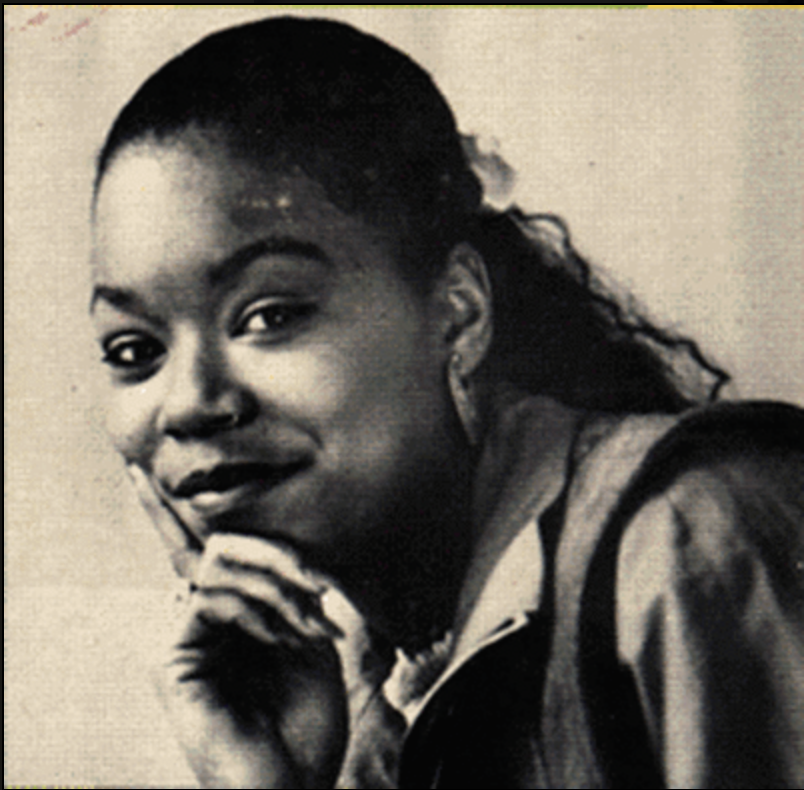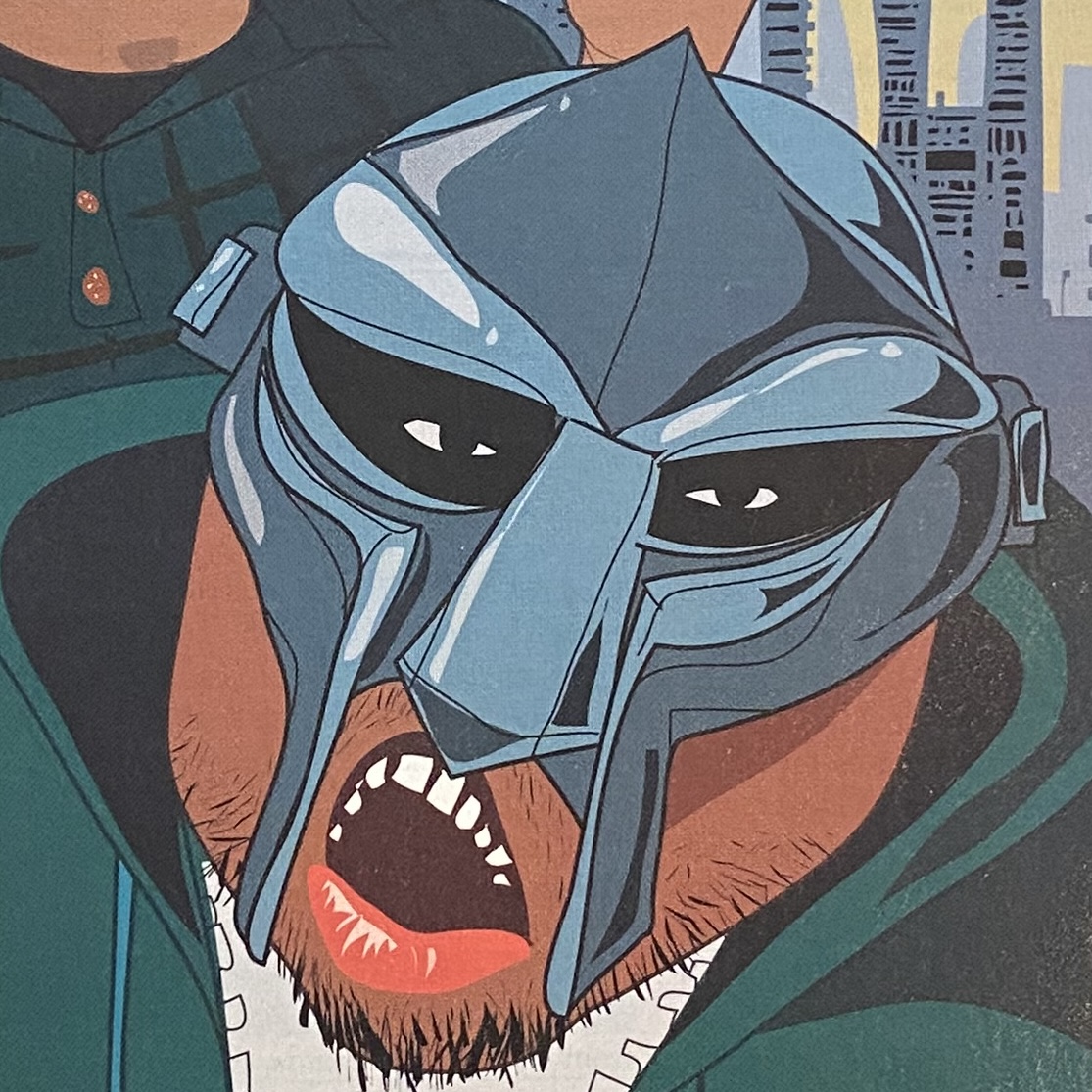In a year that marked the first full year of recorded rap music, a song that debuted several months before continued to shadow it all.
At the dawn of the 1980s, the Sugarhill Gang’s “Rapper’s Delight” lingered in the Billboard top 40, peaking at number 36 in January before finally dropping off the chart. Then as now, critical opinion was divided on whether it was a silly novelty for children or something important and consequential. Music writers blanched at its 15-minute plus running time, lack of sonic variety, and uneven performances by Wonder Mike, Big Bank Hank, and Master Gee. (Allegations that Big Bank Hank used Grandmaster Caz’s lyrics wouldn’t go public until a few years later.) Still, its surprisingly massive success was impossible to ignore. Merely a few months after its fall 1979 release, some asserted “Rapper’s Delight” was the best-selling 12-inch of all time.
“Rapper’s Delight” both precipitated and was part of an avalanche of “rapping deejays” 12-inches, and 1980 introduced a handful of key players. There was Enjoy Records, an imprint launched by soul music veteran Bobby Robinson that served as a vibrant counterpoint to Sugar Hill Records. Its in-house producer, teenage drummer Errol “Pumpkin” Bedward, helped lead sessions on some of the finest and most influential tracks of the era. Recordings by Grandmaster Flash & the Furious Five, the Treacherous Three, and Spoonie Gee sparkle with incredible verve and authenticity. Naturally, the much larger Sugar Hill would poach them over the next several months.
More enigmatic was P&P Records, a consortium of imprints managed by disco/soul impresarios Peter and Patricia Brown. The company exploited the “Rapper’s Delight” fad, churning out 12-inches at rapid-fire pace by scooping kids off the street who could string rhymes together. A few of the voices became relatively successful, like Michael “Mike C” Clee from “Family Rap.” (He later scored a national hit with the Fearless Four’s 1982 single, “Rockin’ It.”) Most remain anonymous to this day. In print ads, the label declared itself “Rap King of N.Y.,” perhaps the first rap company to do so — but hardly the last.
These were the notable companies amidst an astonishing series of threads that defined the music industry’s inaugural dive into a sound no one yet knew how to define. A Billboard story gave most of the credit to the “rapping deejays” making inroads into Manhattan nightclubs like DJ Hollywood. (He got his shot at glory with Epic Records and “Shock the House.”) A Record World column opined that the sound evolved from Jamaican deejays. Both were true, but largely overlooked the scene that had percolated in the Bronx for seven years prior to “Rapper’s Delight,” and which had already begun developing its own codes and rituals distinct from its predecessors. That story wouldn’t be told until 1982, when the massive success of “Planet Rock” and “The Message” prompted journalists to dig deeper into the roots of the culture.
In the meantime, there were celebrities goofing off with novelty raps, like Chevy Chase and “Rapper’s Plight.” There were funksters getting a grip on the new style like James Brown and “Rapp Payback.” There were noble, civic-minded raps made by community activists like Erik Nuri’s “Let’s Vote,” which was endorsed by the NAACP — just in time for the 1980 presidential election. There were a surprising number of raps that featured explicit language, like CC Crew’s “CC Rap” and The Jazzy Three’s “The Rappin’ Spree.” And, contrary to myth that early rap was defined by apolitical party drivel, there were too many recordings with political lyrics to name here, from Brother “D’s” “How We Gonna Make the Black Nation Rise” to Harlem World Crew’s “Rappers Convention,” the latter which addresses the Iran hostage crisis.
It would be hard to argue that most of these records are good in an objective sense. Much like early rock ‘n’ roll, they’re protean scribblings on a sound that was slowly growing into itself, and nearly all follow the “Rapper’s Delight” formula of recreating a familiar disco hit. The voices here spotlight kids riding a wave, lucky to be in the studio earning a few bucks for the stuff they do at the school lunch table and at the local parks. There are a few older journeymen, too. Some, like Tony “Mr. Magic” Pearson, hail from odd little corners of the music industry who were inspired by the mushrooming rap fad. Others, like Blowfly, approach “rapping” with canny cynicism. The fun is in tracing how these details added up to a movement with global impact.
The arrival of Kurtis Blow seemed to portent rap’s eventual professionalism. His records were mixed louder than his peers, and his hooks were slicker and more memorable. While hardly a masterpiece, his self-titled debut on Mercury Records boasted a range that the Sugarhill Gang’s amateurish album could hardly match, despite the trio’s failed attempts at straightforward vocal R&B tracks. Kurtis’ “The Breaks” is a concise disco-funk jam. Still, who can forget the Gang’s chant on “8th Wonder”: “Woo-hah! Got them all in check!” The rap umbrella has always proved bigger than anyone expects.
—
One of the things you’ll learn from exploring recorded hip-hop in 1980 is how little is actually known about the era.
Many if not most of the 12-inch singles that utilized some form of rap were made by virtually anonymous performers who have yet to be identified. Modest information exists on how these records were made and who worked on them. Release dates are often nonexistent, making it unclear if a record was issued in 1979, 1980, or even 1981. Finally, contemporaneous accounts are scattershot, with industry magazines giving inconsistent coverage of an emerging sound that would become one of the most popular in the world.
For decades, hip-hop historians have been fine with that. They’ve focused their attention on the dynamic live happenings in New York. Dubbed cassette tapes of performances that have appeared online reveal an underground scene more vital and energetic than nearly any vinyl recording released in the wake of “Rapper’s Delight.” The pioneers whose accounts of the early days of hip-hop fuel books like Born in the Bronx and Yes Yes Y’all as well as the Netflix documentary series Hip-Hop Evolution usually dismiss the early records as facsimiles of the real thing. Historians have been happy to concur.
But now, it seems myopic and reductive to ignore it all as frivolous novelty. Scholars need to begin to take this era seriously. They need to document the stories and initial impressions of what would become one of the greatest Black art forms of the past several decades. Time is of the essence: Some of the performers and musicians who made these records may be getting on in years or have even passed away. It’s important to catalog as much information as possible about this crucial yet mysterious era before it’s too late.
This list is an attempt to spur that effort. Much of it is dated with help from Ego Trip’s Book of Rap Lists, with one very notable exception. (See the Funky Four + 1 More’s “That’s the Joint.”) A few of these selections ask the reader to reconsider what belongs in the rap canon, like Trouble Funk’s “Pump Me Up.” Some may even surprise you, like when The Sequence rhyme “We’re the Sugar Hill girls with the gangster rap” on “And You Know That.” (Raise your hand if you didn’t know that The Sequence were the first to use the phrase “gangster rap.”)
Most of all, these songs are tons of fun. Hip-hop from 1980 might not dazzle you with lyrical wit and killer beats, but it will certainly leave you with a smile on your face.
The 50 Best Rap Singles of 1980
- Afrika Bambaataa/Zulu Nation/Cosmic Force – Zulu Nation Throw Down (Paul Winley Records)
- Bambaataa/Zulu Nation/Soul Sonic Force – Zulu Nation Throw Down Volume #2 (Paul Winley Records)
- Brother “D” with Collective Effort – How We Gonna Make the Black Nation Rise? (Clappers)
- CC Crew – CC Crew Rap (Golden Flamingo Records)
- Danny Renée and the Space Crew – Space Rap (Shurfine)
- Disco Dave and the Force of the Five MCs – High Power Rap (Mike & Dave Records)
- DJ Hollywood – Shock the House (Epic)
- Family – Family Rap (Sound of New York, USA)
- Family Four – Rap Attack (Tyson Records)
- Flash and the Furious Five – Flash It to the Beat (Bozo Meko)
- Frankie Smith – Double Dutch Bus (WMOT Records)
- Funky 4 + 1 – That’s the Joint (Sugar Hill Records)
- Grandmaster Flash and the Furious 5 – Freedom (Sugar Hill Records)
- Grandmaster Flash and the Furious Five – Super Rappin’ No. 2 (Enjoy Records)
- Harlem World Crew – Let’s Rock/Love Rap (Tay-Ster)
- Harlem World Crew – Rappers Convention (Tay-Ster)
- Jimmy Spicer – Adventures of Super Rhyme (Dazz Records)
- Kool Kyle Starchild – Do You Like That Funky Beat (Ah Beat, Beat) (Enjoy Records)
- Kurtis Blow – The Breaks (Mercury)
- Lonnie Love – Young Ladies (NIA Records)
- Master Jay and Michael Dee – T.S.O.B. (TSOB (The Sound of Brooklyn))
- Mr. Magic – Potential 1980 (Magic Records)
- Mr. Magic – Rappin’ with Mr. Magic (Magic Records)
- Nice & Nasty 3 – The Ultimate Rap (Holiday)
- Rappermatical 5 – Party People (Dynamite Pep Records)
- Radïance – The Micstro (Ware Records)
- Ronnie Gee – Raptivity (Bachak)
- Scoopy – Scoopy Rap (Sound of New York, USA)
- She – Ms. DJ Rap It Up! (Clappers)
- Sicle Cell & Rhapazooty – Rhapazooty in Blue (Showstoppers Records)
- South Bronx – The Big Throwdown (Rissa Chrissa)
- Spoonie Gee and the Treacherous Three / Spoonie Gee – The New Rap Language / Love Rap (Enjoy Records)
- Spoonie Gee Meets The Sequence – Monster Jam (Sugar Hill Records)
- Spyder-D – Big Apple Rappin’ (National Rappin’ Anthem) (Newtroit Records)
- Super 3 – Philosophy Rappin’ Spree (Delmar International)
- Sweet G – Boogie Feelin’ Rap (Queen Constance Records)
- Tanya “Sweet Tee” Winley – Vicious Rap (Paul Winley Records)
- The Disco Four – Move to the Groove (Enjoy Records)
- The Jazzy Three – The Rappin’ Spree (New City Records)
- The Marvelous Three & The Younger Generation – Rappin’ All Over (Brass Records)
- The Sequence – And You Know That (Sugar Hill Records)
- The Sugarhill Gang – 8th Wonder (Sugar Hill Records)
- The Sugarhill Gang – Hot Hot Summer Day (Sugar Hill Records)
- The Sugarhill Gang – Rapper’s Reprise (Jam-Jam) (Sugar Hill Records)
- The Treacherous Three – At the Party (Enjoy Records)
- The Treacherous Three – Body Rock (Enjoy Records)
- TJ Swan – And You Know That (Express Records)
- T.J. Swann & Peewee Mel and Swann Controllers – Maximus Party (Express)
- Trouble Funk – Pump Me Up (TF Records)
- Troy Rainey – Tricky Tee Rap (Heavenly Star Records)
Originally published on criticalminded.com. This post has been updated.
Read More: The Best Rap Singles: Former Entries
Humthrush.com will always be free to read and enjoy. If you like my work, leave a tip at Ko-fi.com/humthrush.


